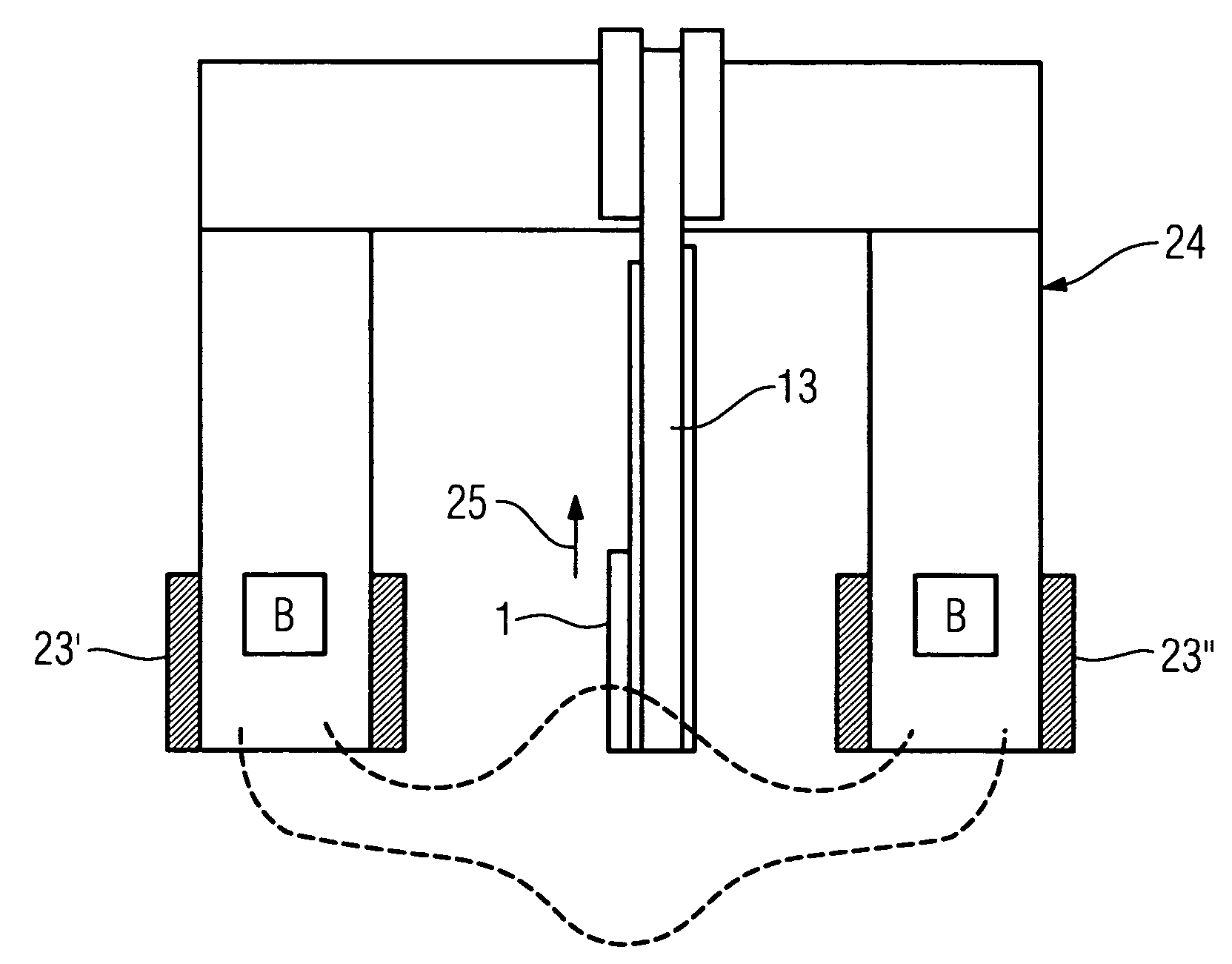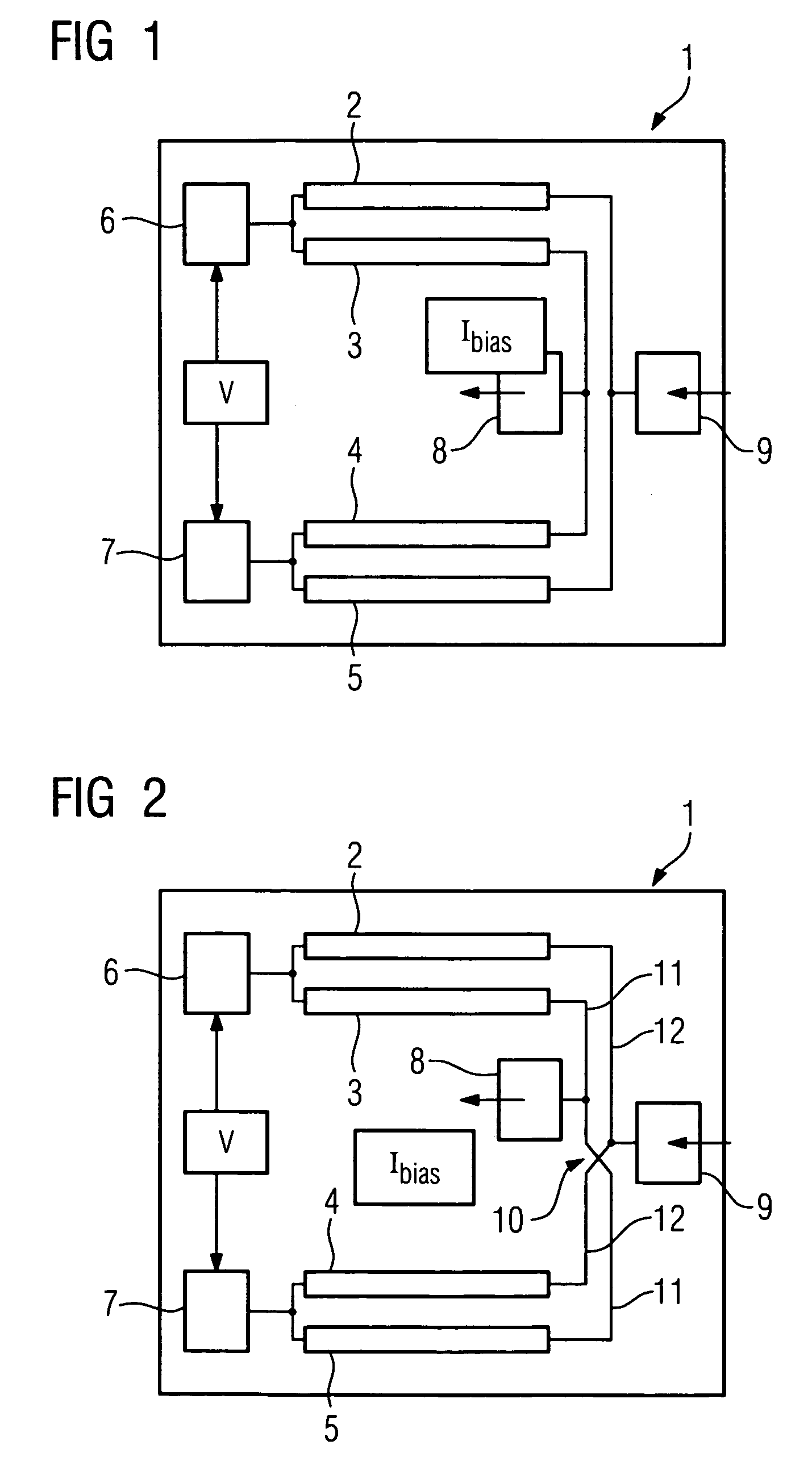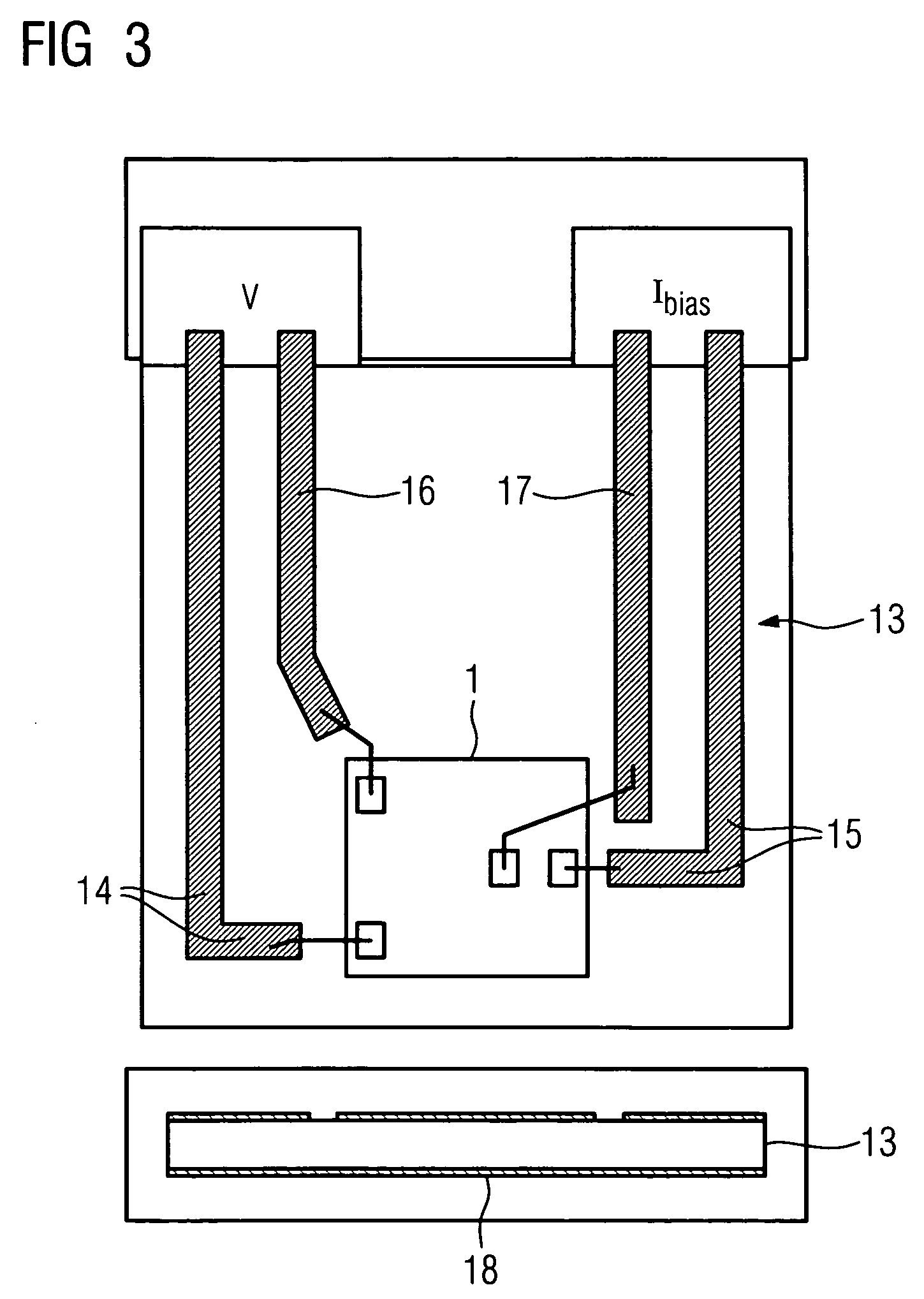Device for detecting defects in electrically conductive materials in a nondestructive manner
a non-destructive and material technology, applied in the direction of magnetic property measurement, material magnetic variables, instruments, etc., can solve the problems of physical impeded by the skin effect, poor spatial resolution, and limited fault size which can be detected
- Summary
- Abstract
- Description
- Claims
- Application Information
AI Technical Summary
Benefits of technology
Problems solved by technology
Method used
Image
Examples
Embodiment Construction
[0020]FIG. 1 shows a chip 1, on which an integrated bridge circuit comprising four magnetically sensitive resistors 2 to 5 is arranged, 6 and 7 indicating contact areas for connecting the tap-off lines for the resulting measured voltage V, and 8 and 9 indicating corresponding conductor connections for feeding a supply current Ibias into the converter bridge.
[0021]The bridge circuit with the chip feed lines (13, 14, 15, 16) is designed to have such a low inductance that the signal output voltage of the bridge circuit is essentially proportional to the magnetic field of the eddy currents and not their induction.
[0022]In the arrangement shown in FIG. 2, the loop area is also folded (see point of intersection 10 between the connecting lines 11 and 12, which in this case are of course guided one over the other in isolated fashion).
[0023]Such a low-induction converter bridge as shown in FIGS. 1 and 2 is integrated in an eddy-current measuring head so as to avoid substantial inductive cont...
PUM
| Property | Measurement | Unit |
|---|---|---|
| depths | aaaaa | aaaaa |
| frequency | aaaaa | aaaaa |
| electrically conductive | aaaaa | aaaaa |
Abstract
Description
Claims
Application Information
 Login to View More
Login to View More - R&D
- Intellectual Property
- Life Sciences
- Materials
- Tech Scout
- Unparalleled Data Quality
- Higher Quality Content
- 60% Fewer Hallucinations
Browse by: Latest US Patents, China's latest patents, Technical Efficacy Thesaurus, Application Domain, Technology Topic, Popular Technical Reports.
© 2025 PatSnap. All rights reserved.Legal|Privacy policy|Modern Slavery Act Transparency Statement|Sitemap|About US| Contact US: help@patsnap.com



